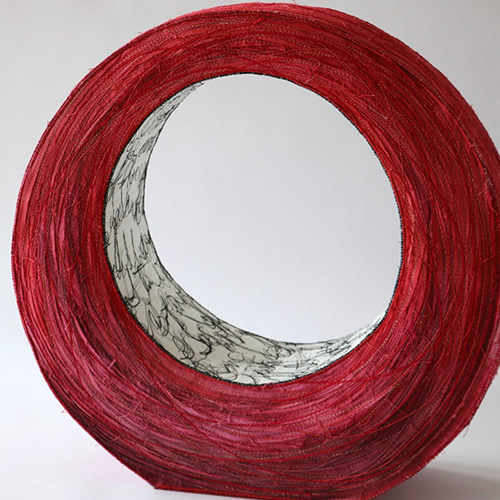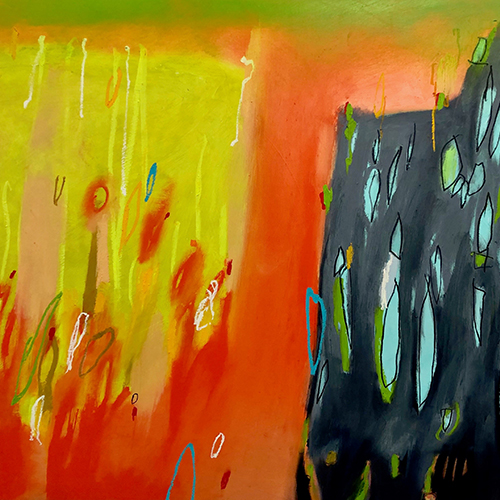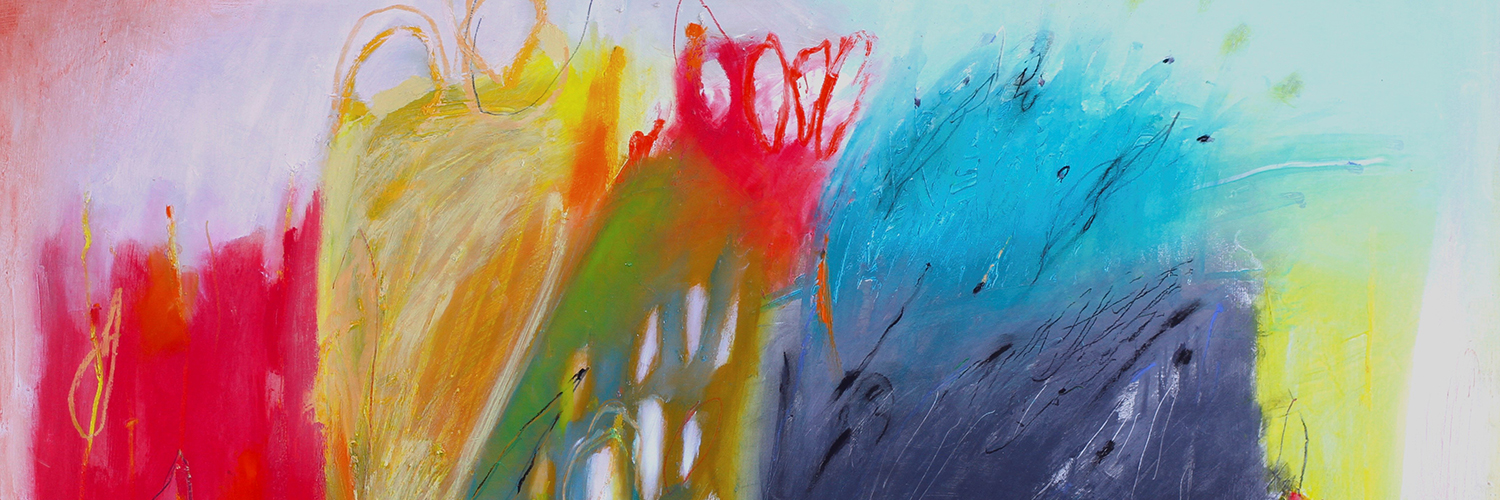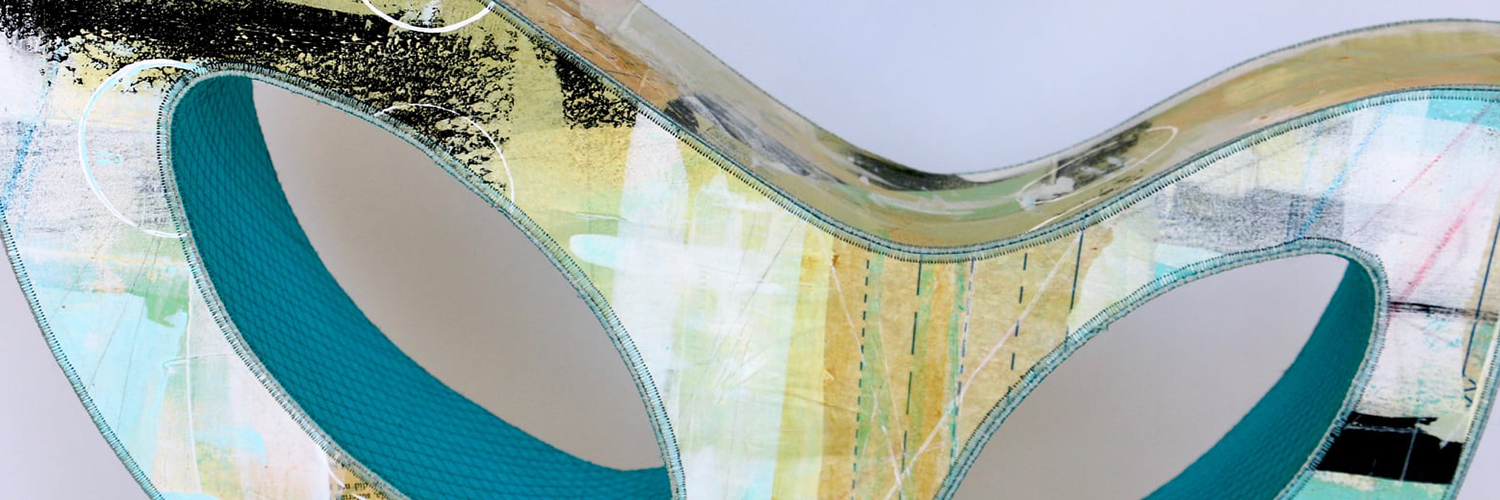
Jackie deRuyter | Kate Nelson: Shape Shifters
April 22 – June 5, 2021
Brewster artists Jackie deRuyter and Kate Nelson present their most recent abstract paintings and sculptures in a colorful, bright, and uplifting exhibition. deRuyter’s sculptures are created by using an innovative process that transforms flat painted fabric into dynamic three-dimensional forms. Painter Kate Nelson pours her feelings about nature and the outdoor life into energetic abstractions as she fuses the outer world with her inner landscape and spirit. With the artwork displayed side by side, the exhibition explores the intuitive roots of each artist’s vision and highlights the distinctions and similarities of their deeply personal artistic expressions.
Cahoon Contemporaries proudly supported by:
Bilezikian Family Foundation

Jackie deRuyter | Kate Nelson
Shape Shifters
Shape Shifters presents the artwork of two stellar Cape Cod artists, Jackie deRuyter, an emerging artist and sculptor, and Kate Nelson, a seasoned lyrical abstract painter who has honed her craft for over fifty years.
deRuyter applies her skills as both a painter and a seamstress to manipulate fabric and create sculptures that contain a compressed expressive power. Through her innovative process, she shifts the dimensionality of her artwork from 2D to 3D, and sometimes back again, cutting up her own paintings to use as source material for her sculpture.
Nelson practices meditation to reach a place of deep calm and a clear mind before fusing the outer world with her inner landscape and spirit to explore something “so deeply personal that I’m sometimes surprised that people can connect to it.” Although she takes inspiration from nature, she wipes away all references to reality as she paints shapes that emerge, shift, transform, and fall away on the canvas.
deRuyter credits Nelson as one her greatest influences, inspired by her capacity to convey “deep feelings, without her artwork being representational.” Upon recently learning this, Nelson felt immensely gratified and applauds deRuyter’s “fearlessness” in innovating new forms and processes in her art.
Their paintings and sculptures have a recognizable aesthetic compatibility; however, the transgenerational thread of influence can also be seen in the younger artist’s increasing confidence to tap into her authentic expressiveness. It reminds us that much can be learned by quiet observation of the work of others, and how they might never realize their influence, nor who is looking, until their work is viewed side by side.
-Annie Dean, curator
Jackie deRuyter
“I love the challenge of seeing what I can create out of materials in a way that no one has ever done before.”
Jackie deRuyter developed her innovative process fifteen years ago after earning a PhD in Cell Biology and starting a family. Having learned to sew as a child from her grandmother and mother, her creativity took an imaginative turn when she started making ballet costumes for her daughters. The process of transforming soft and delicate fabrics, such as tulle and satin, into the rigid and substantial materials needed for tutus and stiff bodices intrigued her.
Inspired, deRuyter gathered slivers of fabric scraps from old sewing projects and began to stich them onto a plain cloth base, using parallel undulating curves, to create a fabric stiff enough to be self-supporting. She made patterns and sewed the fabric into increasingly complex sculptural shapes, advancing from rectangles to shapes with piercings, cavities, and twists.
The process was complex, time consuming, and satisfying – and ultimately it jumpstarted her artistic career.
“I sometimes stop and ask myself whether the materials I am making to cut up for my sculpture are really paintings in their own right.”
Over the past few years, deRuyter has shifted her process and often begins with a large piece of canvas rather than stitching fabric together. She paints the canvas using squeegees, stamps, and scrapers to create interesting textures. She collages book pages, sewing pattern pieces, and tissue onto the surface to create thick layers, and then adds machine and hand stitched patterns to further enliven the surface.
Her paintings are luminescent, reflective, and glowing. As she pushes the boundaries between her 2D and 3D work even further, deRuyter now finds herself increasingly hesitant to cut up her material to make sculpture.
deRuyter wrestles with conventional ideas about art materials and processes but is grounded in the knowledge that “there is a reason I am making things the way I am – they connect to something very deep inside me,” she explains, “and when I work on them, they become their own beings.” She finds herself looking at the works of more established artists such as Kate Nelson for both inspiration and validation.
Biography
Prior to pursuing her passion for art, Jackie deRuyter earned a PhD in Cell Biology from the University of Massachusetts and she continues to be fascinated and inspired by science and nature. A self-taught artist, she honed her creative skills and unique process during workshops with encaustic artist and teacher Kathryn Bevier, fiber artist Gail Barker and metal sculptor Lanny Bergner. deRuyter lives in Brewster, MA with my husband and three children. She is represented by Miller White Fine Arts in South Dennis, MA.
Kate Nelson
“Painting for me is like jazz – disciplined yet free, spare yet full, within a rich tradition yet achingly personal.”
After graduating from college with a premed degree, Kate Nelson moved to Cape Cod and worked as a landscaper and then a graphic designer. She began her artistic path as a printmaker and in the 1980s she studied with Phyllis Szerejko at the Cape Cod Art Association who encouraged her to stay true to herself as an artist and find her authentic voice. She was introduced to Buddhism and learned the principles of painting as meditation.
Today, her practices of meditation, yoga, and playing the flute in her studio allow her to stay focused, clear of mind, and to concentrate when she paints. Over the years she has developed a rich artistic vocabulary of colors, shapes, and expressive gestures, her “tools,” for working spontaneously and approaching each painting as a fresh, new adventure.
“One of the wonderful things about being an older painter,” she says, “is that over the years I’ve developed two practices – patience and trust. Patience to wait and find a gap in all the constant dialog in our brains, and trust in myself as an artist. I think to myself – you have been here before, and something will always come.”
Making art is about “the sensation of spreading the colors on the surface, of the mind being quiet and letting the eye and the hand and the spirit act together.”
Using pigment sticks on board, Nelson throws herself into a painting and begins by layering saturated color fields with undulating lines and uninhibited energetic gestures, allowing shapes to emerge and recede.
While landscapes, nature and her garden are inspirations, Nelson purposefully eliminates all illusions to recognizable and familiar things if she catches them manifesting in her work. “I’m exploring something that can’t be named,” she explains.
Once a painting is complete, Nelson, an avid reader of poetry, seeks out a beautifully phrased passage, such as “the mist blurred grass” from a poem by Gary Snyder, and titles her works. She believes that offering a title can serve as a portal – an invitation for the viewer to stop and look.
Biography
Lyrical abstract painter Kate Nelson has studied at the University of Massachusetts, Amherst where she was influenced by Chuck Close, Keith Hollingworth, and John Grillo, as well as at Massachusetts College of Art and Haystack Mountain School on Deer Isle, Maine. She has worked in residence at the Vermont Studio Center. Her work is in the permanent collection of the DeCordova Museum in Lincoln, MA, the Cahoon Museum in Cotuit, MA and in numerous corporate and private collections, including Sony and Pfizer USA, Children’s Hospital of Pittsburgh, and Cape Cod Healthcare. Nelson is an avid gardener and meditator and works out of her barn-studio in Brewster, Massachusetts. She is represented by Left Bank Gallery in Orleans, MA.


